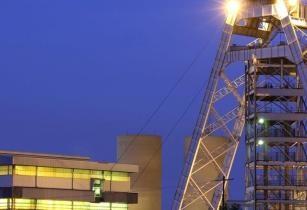Page 2 of 2As an energy partner, power providers not only help miners achieve optimal energy efficiency and reduce operational costs, but ultimately help them avoid a halt in production or complete closure. As demand slows, the price to function becomes too high. In fact, in August 2015, mining giant Glencore urged miners to shut down production to avoid underselling materials until returns were higher.
But even this approach (which has similarities to ‘cold stacking’ in the oil and gas industry whereby rigs are kept dormant when demand is low) can have a long term financial impact. It can jeopardise customer relationships and access to skilled workforce, while still requiring investment to maintain and protect the integrity of equipment. An absence like this can create added expense and delayed reactivation.
To reduce debt, particularly during a shutdown, companies typically sell assets to competitors at a lower cost. While this achieves the cost-saving objective in the short term, this equipment will need to be replaced and most likely at a higher cost. More importantly however, it can impact power reliability and efficiency across the industry as a whole particularly if regular, sufficient maintenance is not available.
This is an added benefit of rental power. Remote monitoring recognises any risk of disruption or signs of inefficiencies and engineers are on hand to prevent these risks becoming reality. Poor fuel efficiency has a massive impact on operational expenditure and without the correct maintenance, this is often not picked up in time.
Similarly, on-site power plants consisting of a fleet of smaller engines, compared to those with fewer larger engines, reduces the impact of derating and uneconomical redundancy. With customer savings in mind, we retrofitted our G3+ reciprocating engine, which de-rates at higher temperatures and as a result has industry leading fuel efficiency.
Fuel, alongside staff, is a mine’s biggest expense. New innovations that enable the use of cheaper, clean, alternative sources of energy, such as solar-diesel hybrids or using waste product are becoming more popular as a result. One example of this was our work with Beatrix Gold for its Sibanye operation. We developed new technology that allowed for waste methane gas to be used in our generators – creating 2 MW of power from a free fuel source, improving health and safety, and reducing the mine’s carbon footprint by avoiding the need to flare gas.
And we’re currently installing a solar-diesel hybrid package into a copper and zinc mine in Eritrea. It will run for 10 years and provide 22 MW of diesel and 7.5 MW of solar powered energy.
This brings down the overall cost of energy and is a perfect option for mines that operate in the sun-belt and have the space for solar.
Heavy fuel oil (HFO) is another option that enables mines to make significant cost savings.
Commodity prices will always fluctuate but the cost saving challenge will be a constant. Miners have learned from the downturn and are taking steps to reduce overheads and protect profit margins.
Improving fuel efficiency is a common challenge that should be addressed if a company is to remain competitive, profitable and open for business.





















